On a hot Australian summer day, does your caravan feel more like an oven than a place of respite from the heat? Summer holidays should be when we are making some of the best memories of the year, yet this is hard to do if you are constantly lying in a lather of sweat.
There’s nothing worse than being trapped in your caravan with the whole family and no way to cool down. It’s enough to put everyone off going camping again next time!
Fortunately, we’re here to help with some practical tips on how to beat the summer heat.
#1 - Enhance Air Flow
Air flow and ventilation can make a huge difference to the temperature inside your van:
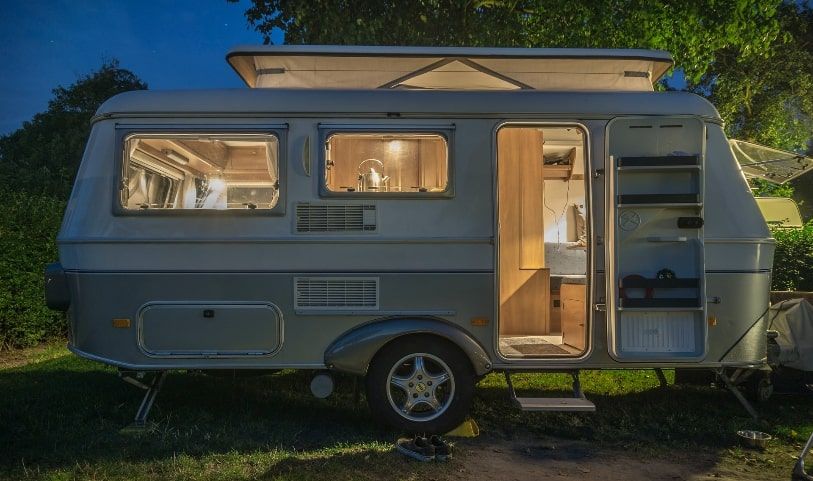
#2 - Air Conditioning / Fan
Sometimes the heat is simply too much to bear. There’s only so many nights that you can spend lying in a pool of sweat!
If you don’t handle the heat well, or will be going on extended trips, consider investing in air conditioning or a fan to keep your van cool.
Air Conditioning
If you invest in caravan air con, consider a reverse cycle unit. These put out cold air in summer, but can also be used as a heater in winter. Air conditioners are expensive but they are the most efficient way to cool down your whole van quickly.
If you are retrofitting an air conditioner it’s also important to consider how this will impact your total caravan weight.
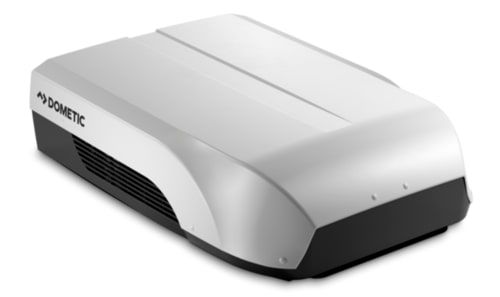
Caravan air conditioner
Fans
Fans are far more cheaper to purchase and economical to run than air conditioners but they tend to take up more space and only blow air over one part of the van at a time.
They also don’t actually cool down the air in your van, they simply blow it around, which helps you feel cooler, to a point.
12V oscillating fans tend to be the most popular option. Their power consumption is far lower than air conditioners, so they are suitable for being used at unpowered sites provided you have a suitable battery setup (and solar panels if you'll be off grid for a while).
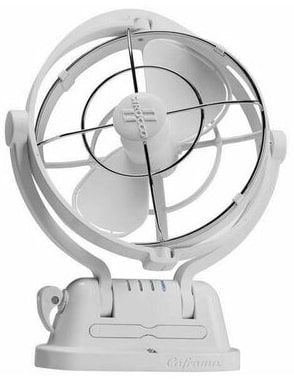
Caravan 12V fan
#3 - Cook Outside
A summer holiday is not the time to refine your in-caravan cooking skills. We live in the land of the barbie, so cook outdoors when you can. Cooking outdoors prevents the rapid build-up of heat inside your van that accompanies most caravan cooking.
You also won’t have to worry about any lingering smells or spilling food on the upholstery. Keep indoor food preparation to strictly salads or a bowl of Weetbix!

#4 - Find Some Shade
If you don’t want to get sunburnt, you’ll stay in the shade. The same principle applies to caravans. It’s a good idea to set up in a shaded area when possible. A large tree can provide useful shelter and filter out the intense rays of the sun.
Ideally, you want the tree to be on the western side of the van to provide protection during the hottest part of the day.
You can’t always choose your site at a campground, but if you can, do your best to find one with some shade.
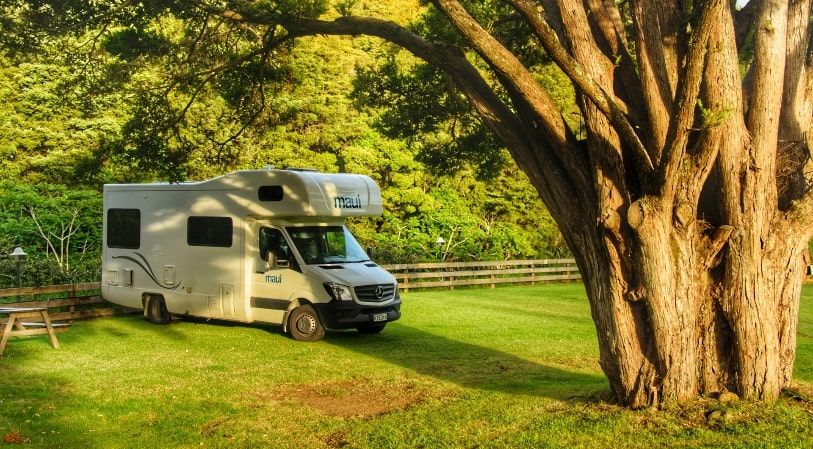
#5 - Keep The Sun Out
It’s possible to take the previous step even further by installing blackout blinds. This is more of an investment but if you use your van regularly during the hottest times of the year, it’s worthwhile.
In any case, some people sleep better in total darkness so they may be useful all year round.
#6 - Upgrade Insulation
If you’re new to the world of home improvement, then this may seem counterintuitive. However, it’s important to remember that insulation isn’t just about making your van or home warmer. Of course, this is a function, but insulation also protects your RV from the sun’s heat by adding a barrier.
It’s easier for heat to seep through thin walls than strong insulation. Most vans already have roof insulation but you may need to add it to your walls for full protection.
Consider putting a coat of insulating paint on your van too because this adds an extra layer of defense from the sun’s rays.
#7 - Awnings
As we said, the simplest way to avoid overheating in your camper is to not be inside it. Awnings let you side outside and enjoy the breeze (if there is any!).
Caravan awnings come in a variety of different forms so let’s take a look at some of your options:
Rollout awnings
These days it’s easy to buy a van with a preinstalled rollout awning. However, many dealerships will also retrofit one for you.
They’re extremely easy to use and provide excellent shade during the day. The main setback is that the price increases with the size and quality of your awning.
Full awnings
Most caravan users attach some kind of awning to their van. They’re a fantastic addition because you add an extra room or even two to your van. Full awnings are popular because you can maintain privacy while being outdoors in the cooler air. This makes them perfect for alfresco dining or storing big items like bicycles.
Full awnings are made from a variety of materials.
- Polyester is lightweight and dries quickly. There are different densities available on the market depending on the durability that you need.
- Acrylic awnings are more expensive but longer-lasting than their polyester equivalents.
- Fibre-dyed acrylic awnings are also UV resistant which makes them perfect for the Australian market… if you can afford one.
The main downside is that full awnings are expensive and bulky to carry. The larger your van, the more material you need and the higher the cost. This can range from hundreds to thousands of dollars. It’s also time-consuming to set them up.
Porch awnings
Porch awnings are a useful, smaller alternative to full awnings. They’re much quicker and easier to set up but they are a fair bit smaller. You fix them to the ground with pegs like a tent. Guide ropes may be used too.
Two measurements must be considered when setting up a porch awning. Firstly, the length of the caravan where the awning is fixed. Secondly, the height from the awning rail to the ground.
Porch awnings vary in size. The smallest provide enough space for one person to sit comfortably. However, some are bigger and will fit a table and multiple chairs.
Inflatable awnings
This type of awning has grown in popularity over the last few years. Their main advantage over their rivals is the lack of metal poles. This makes it much easier to set them up.
All you need to do is inflate them with an air pump before pegging them to the ground. They are more expensive than traditional awnings.
#8 - Change Bedding
Don’t forget to remove any heavy linen like thick rugs and quilts during the hot summer months. These act as insulators and retain heat. Replace them with lighter alternatives like cotton sheets to avoid overheating while sleeping and relaxing in your van.
#9 - Lighting
When it comes to staying cool during the Australian summer, every little bit of effort counts. Even the lights inside your van will impact the temperature inside. Halogen and incandescent bulbs emit a lot more heat than LEDs.
It may not be possible to replace all your bulbs but it’s worth considering. Alternatively, try to sit outside as much as possible so you don’t need to use the lights inside your vehicle.
Light some citronella candles to keep away the bugs, crack open a few cold ones, and enjoy the evening.
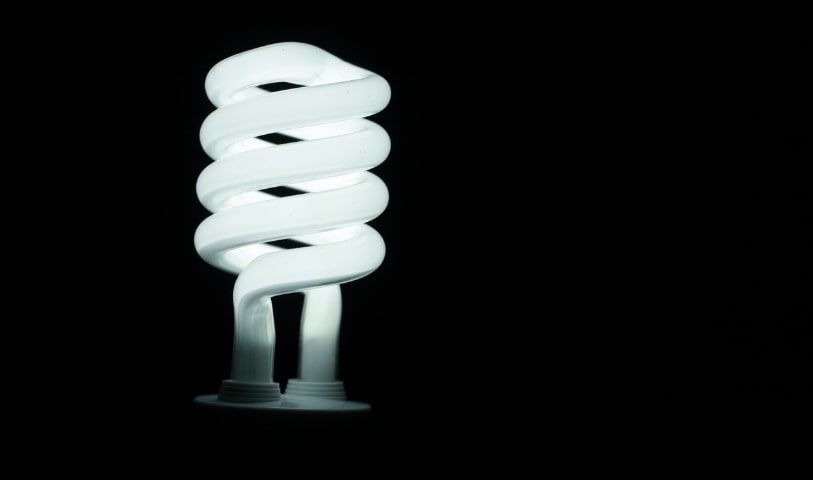
Summing Up
I hope that you can use some of these tips on your next summer holiday. Remember to plan ahead and check the weather before you leave. If you have any questions about any of these points, please comment below!
This article may contain affiliate links. I will earn a commission if you choose to purchase a product or service after clicking on my link. This helps pay for the cost of running the website. You will not be disadvantaged in any way by using my links.
Note that while every effort is made to ensure the accuracy of the information on this page, there may sometimes be errors. Check all specifications with the manufacturer before purchasing any product.

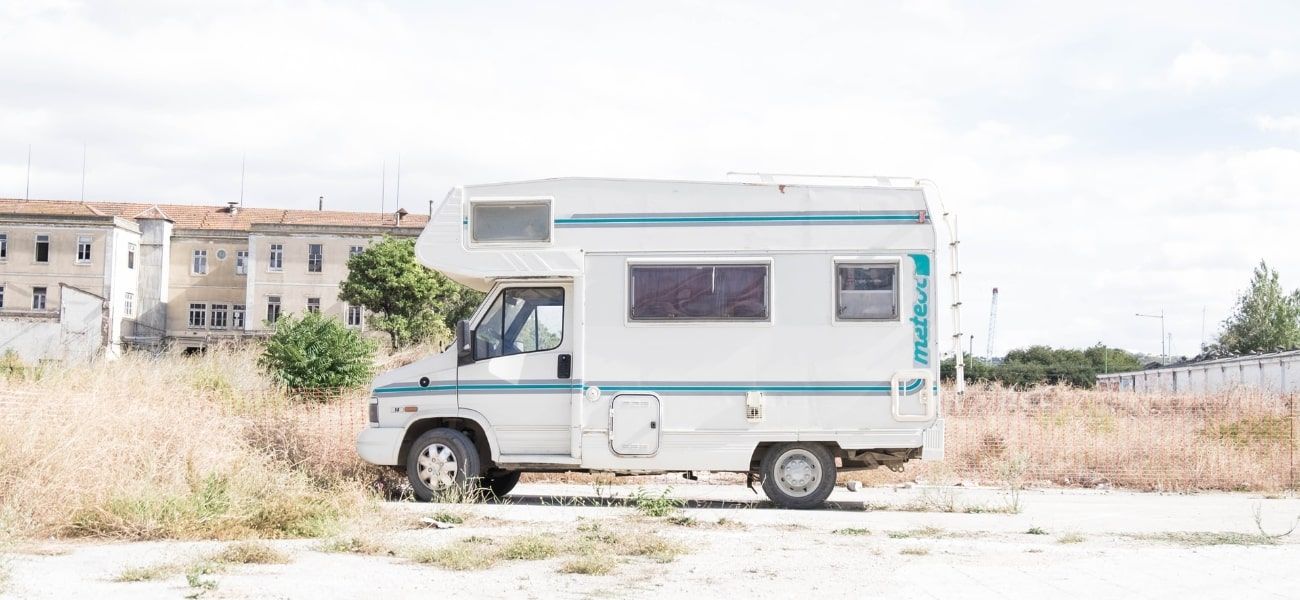
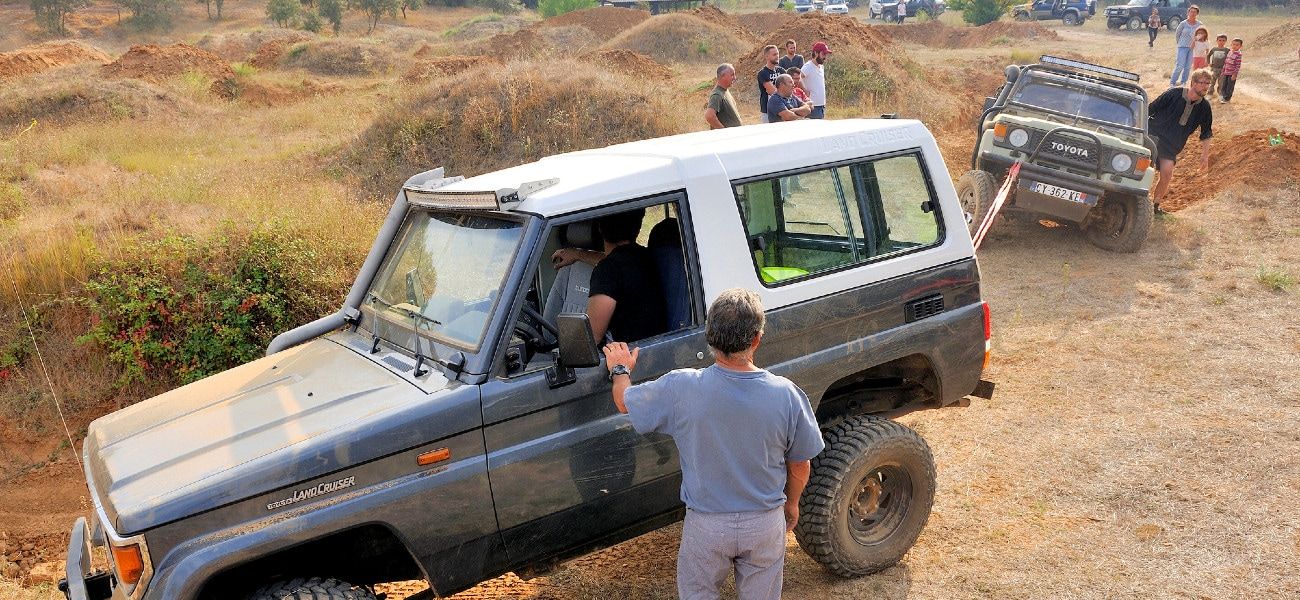

I find the most useful thing is an exhaust fan on a high window.
This is because a closed caravan will actually get hotter than even the outside air, this is because the caravan metal becomes hot from the sun and accumulates this, dispersing a lot of this heat inside the caravan, you end up with a caravan that can easily be 5-6 degrees hotter inside, than outside.
The easiest solution is to replace the inside air, with outside air, do this with an exhaust fan. The end result is the air inside your caravan is the exact same temperature as air outside of the caravan, and the roof works as shade obviously, so the end result is akin to sitting under a tree, you are not struck by rays, and you are just in the ambient air temperature, this usually can be comfortable enough up until around 32-34 degrees. If the temp goes beyond that, you will need to use an air conditioner.
Great advice, thank you so much Toki! I’ll have to take a look at what exhaust fans are out there and do a write up on them at some point…